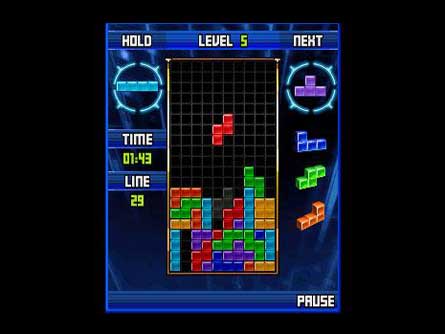A brain-boosting video game
A new study suggests that playing Tetris builds gray matter
In the video game Tetris, players try to pack as many shapes as possible into a small space. According to a new study, that’s not all they’re doing: Scientists found a connection between playing Tetris and the size of part of the brain.
It sounds like a joke, but the study uses serious science. A team of three researchers from Canada and the United States scanned the brains of 15 adolescent girls, aged 12-15, who played Tetris. The scans showed that after 3 months of playing the block-stacking game, gray matter in the girls’ brains was thicker. (Gray matter is the wrinkly mixture of brain cells and blood vessels responsible for processing information in the brain.) Part of the thicker gray matter was in a region of the brain near the top of the head. This area, called the parietal lobe, is believed to be responsible for collecting information from the senses.

The study shows that “brain structure is much more dynamic than had been appreciated,” says Richard Haier of the University of California, Irvine, one of the three scientists behind the study. Haier says they studied girls’ brains because they typically spend less time playing video games than boys.
For comparison, the scientists also scanned the brains of 11 girls who had not been playing Tetris. They found no increase in the thickness of those girls’ gray matter—suggesting that certain parts of the game-playing girls’ brains grew because the girls had played the video game.
The researchers didn’t stop there—they also did real-time brain scans of girls while they were playing Tetris. For those scans, they used a technique called functional magnetic resonance imaging, or fMRI. An fMRI tracks how blood moves through the brain, and allows scientists to see which brain areas are being used.
These scans showed that in the brains of girls who played Tetris for three months, some parts of the brain were being used less. The scientists don’t know why. Haier suggests that the drop in activity may be due to the brain actually working more efficiently than before. “We’re not sure, but we think the brain is learning which areas not to use,” Haier says. “As you learn the game, it becomes more automatic.”
The parts of the brain that got bigger over the course of three months were not the same parts of the brain that were being used less. This comparison hints that bigger is not always better: Just because a part of the brain gets bigger doesn’t mean that it’s working more efficiently.
Understanding how the brain works is not easy, says Haier. The scientists don’t know if the brain changes due to Tetris will help a person learn new skills or have better memory. “We know Tetris changes the brain,” Haier says. “We don’t know if it’s good for you.”







